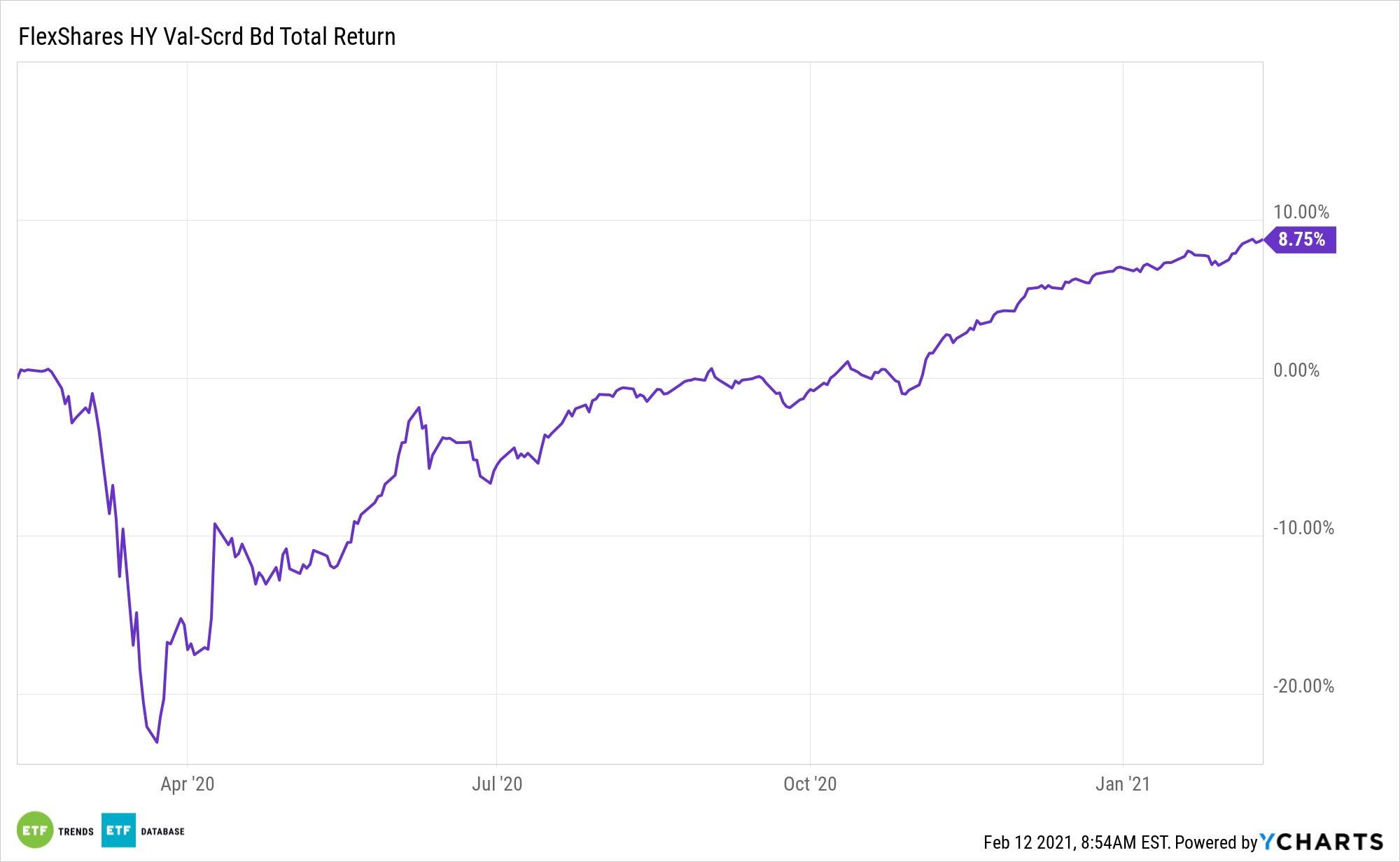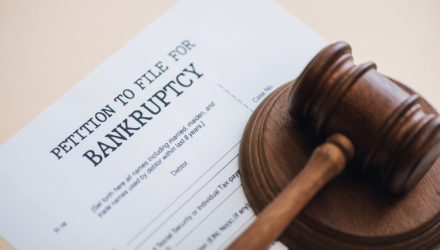Many casual bond investors don’t hear much about expected default frequency (EDF), but the current state affairs on that front could be signaling opportunity with exchange traded funds such as the FlexShares High Yield Value-Scored Bond Index Fund (NYSEArca: HYGV).
HYGV’s index reflects the performance of a broad universe of U.S.-dollar denominated high yield corporate bonds that seeks a higher total return than the overall high yield corporate bond market, as represented by the Northern Trust High Yield US Corporate Bond IndexSM. The fund generally will invest under normal circumstances at least 80% of its total assets (exclusive of collateral held from securities lending) in the securities of its index.
“Moody’s Analytics’ average expected default frequency metric of U.S./Canadian high-yield issuers, or high-yield EDF, recently sank to 2.36% for its lowest reading since the 2.35% of early October 2018,” notes Moody’s Investors Service. “Just prior to October 2018, the high-yield EDF metric’s month-long average formed a now nearly 6.5-year low of 2.25% in September 2018, when the Bloomberg/Barclays high-yield bond spread averaged 325 basis points. In conjunction with the latest drop by the high-yield EDF, the Bloomberg/Barclays high-yield bond spread recently approached 325 basis points.”
Great Expectations and a Solid Foundation for HYGV
With yields on U.S. government debt depressed and likely to remain that way for several years, advisors are looking to other corners of the bond market to source income. Predictability, some will embrace high-yield corporate debt and the relevant exchange traded funds.
HYGV focuses on value by pursuing the higher risk/return potential found by concentrating on a targeted credit beta; utilizing Northern Trust Credit Scoring methodology to eliminate the bottom 10% of issuers; performing liquidity assessment based on issuer’s debt outstanding, age, and remaining time to maturity with the purpose of eliminating the bottom 5% illiquid securities; and intending to match the duration of a market cap-weighted index (ICE BofAML US High Yield Index) while maintaining sector neutrality.

“In terms of month-long averages, the post Great Recession low for the high-yield bond spread is the 320 bp of January 2018,” adds Moody’s. “However, that trough was well above previous bottoms. Prior to the Great Recession, the high-yield bond spread averaged less than 300 bp in each month beginning in December 2006 and ending with June 2007, wherein the spread bottomed at May 2007’s 247 bp. During May and June of 2007, the high-yield EDF’s month-long average set a record low of 1.6%.”
For more on multi-asset strategies, visit our Multi-Asset Channel.
The opinions and forecasts expressed herein are solely those of Tom Lydon, and may not actually come to pass. Information on this site should not be used or construed as an offer to sell, a solicitation of an offer to buy, or a recommendation for any product.

